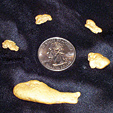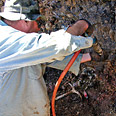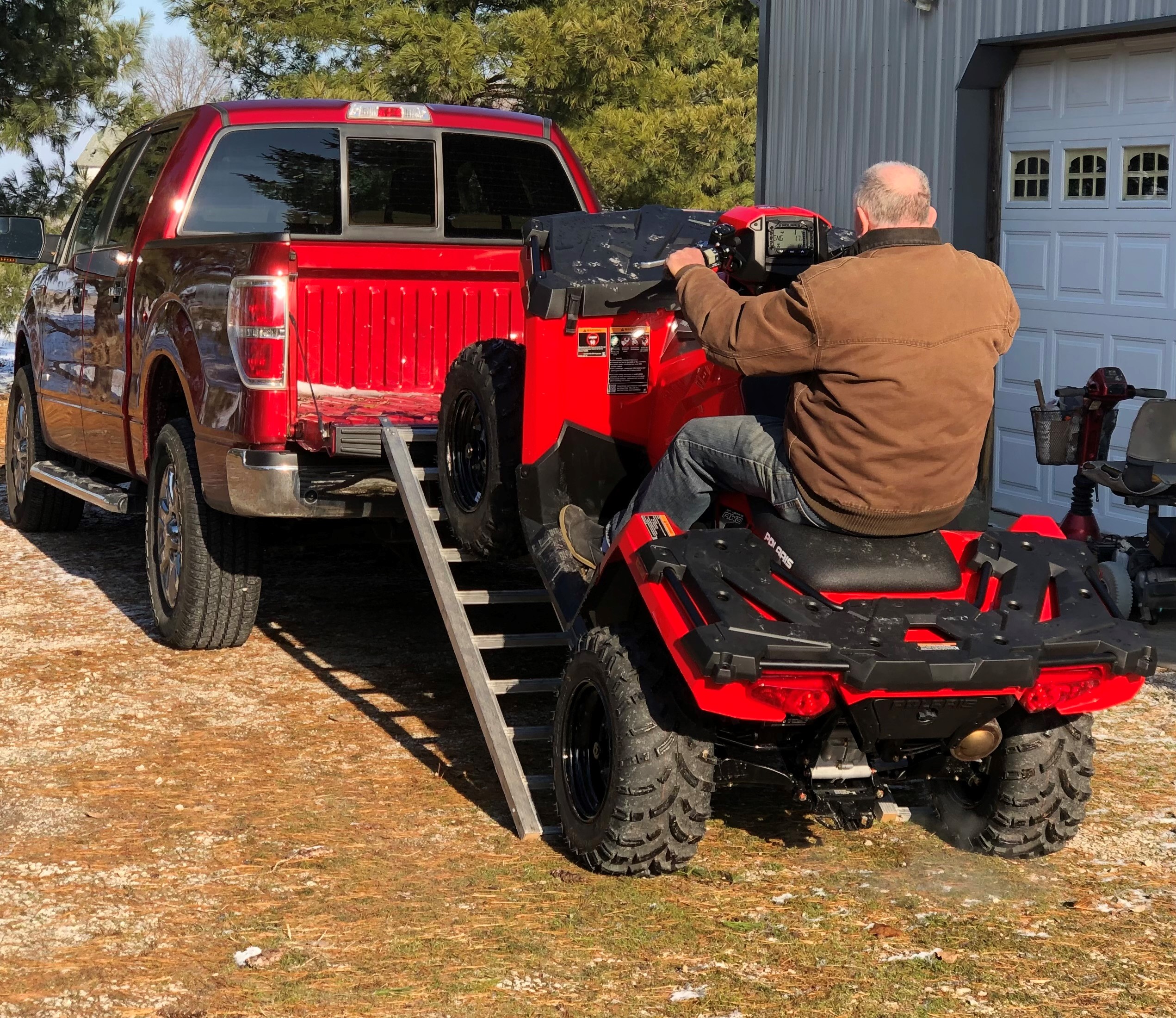All Articles
Legislative and Regulatory Update
November 2005 by Scott Harn
• ESA reform, finally
The House of Representatives passed a reform bill designed to fix many of the flaws associated with the Endangered Species Act (ESA).
HR 3824, The Endangered Species Recovery Act of 2005, otherwise known as TESRA, addresses many of the issues that turned a well-intentioned law into a vehicle for environmental extremists to force their ideology on the public. Some of the corrections incorporated into the bill include:
1) Compensation to private property owners for losing productive use of their land.
2) A 90-day period for the government to respond to a land owner when the land owner wants to know if endangered species could be harmed by proposed activities. A written determination shall be given to a property owner, when requested.
3) Peer reviewed science.
4) Repeals critical habitat designation, replacing it with identifying specific areas where the most progress can be made.
5) Codify the “no surprises” rule, so that a project or permit cannot be withdrawn once it is given the go ahead.
6) Allowing the Secretary of the Interior discretion over listings and designations based on all the available information.
The House Resources Committee posted a few facts on the effectiveness of the current ESA:
•Less than 1% (10 of roughly 1,300 species) have recovered in the Act’s history.
•39% of all listed species are classified in “unknown” status.
•21% of all listed species are classified as “declining.”
•3% (or roughly 2 dozen species) are believed to be extinct.
•Only 6% of all listed species are classified as “improving.”
•77% of all listed species have only achieved 0-25% of their recovery goals.
Resources Committee Chairman Richard Pombo (R-CA) has been working on ESA reform for years, attempting to negotiate reasonable compromises with members of both parties. The bill he introduced, along with Representative Dennis Cardoza (D-CA), was the culmination of those efforts, and passed the House by a 229-113 vote.
The Sierra Club released a statement warning that Congress “took the first step today toward gutting the 30-year-old Endangered Species Act.”
Others are concerned the bill will increase the federal government’s power over private property. Over 80 groups signed a letter to Pombo saying that TESRA does not sufficiently restrict government influence over local land development.
HR 3842 is a excellent start to fixing a broken system. Now we all need to contact our state senators and ask them to finish the task by passing ESA reform. Any reform bill will have to get through the Senate’s Fish, Wildlife, and Water Subcommittee, chaired by Lincoln Chafee (R-RI). Please take a moment to send the Honorable Lincoln Chafee a polite note asking him to address the issues specified in HR 3842.
The Honorable Lincoln D. Chafee
Phone: (202) 224-2921. Fax: (202) 228-2853. For email, use the webform at: chafee.senate.gov/webform.htm
Also, please let Congressman Pombo know you appreciate his efforts.
The Honorable Richard Pombo
Phone: (202) 225-1947. Fax: (202) 226-0861. Email: rpombo@mail.house.gov
• BLM finalizes another fee hike
The Bureau of Land Management has again changed their fee structure related to mining claims, causing more cost uncertainty for miners. BLM’s latest rule change allows for adjustments—most likely increases—in claim fees every year. Fees will be adjusted yearly, and new fee schedules will take effect each October 1.
New fees will be calculated using the “Implicit Price Deflator for Gross Domestic Product", which is published annually by the US Department of Commerce for the previous year. Because the fee recalculations are simply based on a mathematical formula, we will change the fees in final rules without opportunity for notice and comment.”
The initial fee for filing a mining claim will rise to $170. This amount includes a $125 maintenance fee, a $15 service charge or processing fee, and a one-time $30 location fee. The annual fee per claim for those who pay the maintenance fee in lieu of completing assessment work is $140, but will likely increase each subsequent year under BLM’s “mathematical formula” mentioned above.
It gets worse. The fee for processing a Plan of Operation will be calculated on a “case-by-case basis” per the new rule, providing no cost certainty whatsoever. They state they will provide you with an “estimate” upon receiving your application.
BLM tries to justify these changes by stating that Congress has authorized the agency to collect fees for processing costs and the General Accounting Office has recommended they recover those costs.
In the BLM’s analysis there is no comparison of the costs, nor the delays caused by excessive regulations, between the US and other countries. Those in charge just don’t seem to get it—all the fees and regulations associated with mining in this country continue to force companies to spend their exploration dollars elsewhere, resulting in lost jobs and more foreign imports of necessary minerals and metals. While Canadian provinces like Manitoba offer incentives up to $300,000 and minimal claim filing fees of C$55 to encourage exploration, the US government continues to discourage exploration with ever-increasing fees and daunting regulations.
Miners can appeal case-by-case determinations, but won’t get anything accomplished while waiting for the process to run its course unless you pay their fee. “You may appeal BLM’s estimated processing costs in accordance with the regulations in part 4, subpart E, of this title. You may also appeal any determination BLM makes under paragraph (a) of this section that a document designated for a fixed fee will be processed as a case-by-case fee. We will not process the document further until the appeal is resolved, in accordance with paragraph (b)(5)(i) of this section, unless you pay the fee under protest while the appeal is pending. If the appeal results in a decision changing the proposed fee, we will adjust the fee in accordance with paragraph (b)(5)(ii) of this section.”
There is one area where the BLM did appear to listen to the concerns of miners. Regarding fees associated with mining patents, which are still prevented by a moratorium on patents, they agreed to reduce the patent adjudication fee from $2,520 to $1,260 for those patent applications involving 10 or fewer claims.
BLM states it “is aware that this rule will affect a large number of small entities since nearly all of them will face fee increases for activities on public lands. However, we have concluded that the effects will not be significant.”
The Northwest Mining Association had this to say: “BLM did lower the patent processing fee for patent applications of 10 claims or less. Otherwise, all of NWMA’s comments, and those of the mining industry in general, were dismissed or ignored by the BLM.”
The only feasible option appears to be to get legislators involved. It’s not an easy task, but we will be recommending this approach through the Northwest Mining Association and National Mining Association.
No area of mining appears unaffected. BLM increased fees for oil and gas, geothermal, coal, and nonleasable mineral groups as well.
Check the “Recent News” section of our website if you would like to review the entire rule as published in the Federal Register.![]()
Ask The Experts - A few questions about 'peak gold'
What's In A Name?
 The names attached to these areas came about from many sources. Many are easy to see why the name was given while others had a more contrasting note to them.
The names attached to these areas came about from many sources. Many are easy to see why the name was given while others had a more contrasting note to them.
Uphill Battle Continues for California Dredgers
There are currently three controlling agencies or entities over suction dredging in California—and you can make that four if the state legislature decides to further muddy the waters with additional legislation to block suction gold dredging in the state.
Maine to Create Mineral Park
The Maine Geological Survey is raising money to acquire a cluster of world-famous mines and create the state’s first public mineral park for rockhounds, science teachers and others with an interest in rocks and minerals.
Legislative and Regulatory Update
- DOI to address threatened species
- 141 Confirmations still pending
- California withdrawals canceled
Turquoise Mining—Labor Intensive, But Worthwhile
 For many years, the US had a historical tradition of small-scale mining. Individuals or small groups of miners would spend part of the year working the higher-grade sections of old mines and ship the high-grade ore to smelters or...
For many years, the US had a historical tradition of small-scale mining. Individuals or small groups of miners would spend part of the year working the higher-grade sections of old mines and ship the high-grade ore to smelters or...
Subscription Required:
The Bawl Mill
• The Price of Gold—Where It’s Headed and Why
• Mining Companies Competing for Labor
• Sam, the Tenderfoot Prospector
• Placer Gold in Russia
• The Rampart Goldfields, Alaska
• Tales of California Gold Discoveries 3rd in a Series—Bloody Nick The Miner
• Company Notes
• Miners Rally Successful
• Venezuela’s Chavez Halts Mining Projects
• Metal-Mineral Identification Utilizing a Detector
• Mining Stock Quotes and Mineral & Metal Prices
• Looking Back
• Melman on Gold & Silver
• Montana Lawmakers Want Economic Review of New Mining Rule
Free:









